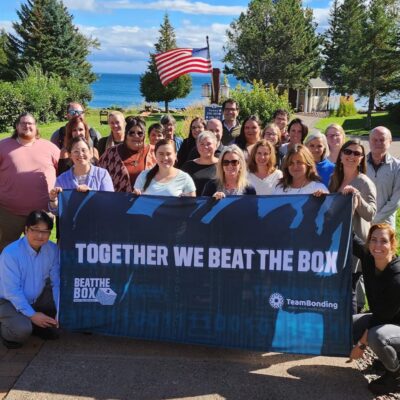Employee surveys have long been a tool for gauging workplace sentiment. It makes sense; why spend time overthinking and guessing when you can just ask employees directly? And in recent years they have become even more popular, predominantly being used to check satisfaction and engagement.
But do they really work? Can an employee survey actually provide useful and actionable information? In today’s blog, we’re going to take a closer look at employee surveys, their efficacy,why employee surveys are important, and the best practices for employee surveys.
Understanding Employee Surveys
First, let’s try to understand employee surveys. As the name suggests, employee surveys are a series of questions you ask to employees. These surveys can provide valuable information on the topic(s) they cover.
For example, you might have a survey that asks employees about their work-life balance. The results from that survey could provide valuable information about workload, employee mental health, and more. Using that data to action can help you make changes that change your business and working environment for the better.
Surveys can also cover less data driven topics, such as employee personality or preferences. If you are putting together a team, a survey about working habits, preferences, and more could help you build a stronger, more cohesive team.
This is what makes surveys a valuable resource for businesses; when utilized correctly, they can offer key information that allows you to make smarter, more informed decisions for your business. Our decisions should be based on facts, data, and logic, and surveys help make that possible.
Two of the most common and useful surveys are the employee engagement survey and employee satisfaction survey. These two in particular can be incredibly useful when it comes to managing employees and ensuring a healthy work environment, so let’s spend some time looking at each of them.
Employee Engagement Surveys
Employee engagement surveys aim to assess the engagement of individual employees. They measure employees’ motivation, dedication, enthusiasm, sense of purpose, and more. The purpose is to get a better understanding of how engaged your employees are, and then to use that information to inform your future decisions.
There are numerous benefits to conducting an employee engagement survey. Engagement is an important factor in your organization. Engaged employees are more dedicated, motivated, and ultimately are better employees. As a business owner, leader, or manager, you want your employees to be as engaged as possible.
And that’s why surveys enter the picture; you don’t know how engaged your employees are unless you make an effort to find out, and surveys are one of the easiest and most effective ways to do so. However, that doesn’t mean there aren’t struggles to deal with.
A common issue with engagement surveys (and surveys in general) is that they aren’t followed by action. It’s good if you find out that a lot of your employees aren’t engaged, but that information doesn’t mean much if you don’t take action. Surveys should be used to inform your actions, not just as numbers to look at.
Another challenge you can run into is with the questions. Your survey is only as good as the questions you ask. If you ask questions that don’t address what you’re looking for, you won’t have usable results. It’s key that you ask the right employee survey questions.
Employee Satisfaction Surveys
Now, let’s talk about employee satisfaction surveys. These surveys are very similar to engagement surveys, except they focus on satisfaction. They mainly seek to gauge satisfaction in regards to compensation and work-life balance.
Satisfaction is incredibly important in the workplace. Studies have shown that satisfaction and productivity are linked, which shows that satisfaction isn’t something that you should overlook. Happy employees are better employees (and less likely to leave), so you want to know how satisfied they are with their jobs.
Surveys can help you identify the satisfaction of employees, areas in need of improvement, and give you information that enables you to take focused and precise action. Paired with a good, actionable plan, satisfaction surveys can be an incredibly useful tool.
Satisfaction surveys face the same difficulties as engagement surveys. You need to ask the right questions, and you have to make sure you follow up your surveys with action. But don’t worry; we’ll be covering best practices for employee surveys shortly.
Pros and Cons of Employee Surveys
Even though employee surveys have a lot of advantages, they also have disadvantages too. It wouldn’t be fair to discuss the pros without the cons, so let’s take some time to look at the upsides and downsides of employee surveys.
Pros
We’ll cover the pros first since they’re a bit more obvious. The main pro is that you get more information about your employees, work environment, and can identify areas of improvement. As explained earlier, this information can be used to target key areas and make noticeable improvements to things like productivity.
Another pro is that you are opening up more communication. Even if surveys are anonymous, you are encouraging employees to communicate effectively and openly about any issues, concerns, or struggles they have. This can be a great way to start conversations, open up communication, and create a more communicative work environment.
One last benefit is that they can help build trust. Doing anonymous surveys shows employees that you want their feedback and won’t punish them for speaking out. And taking action based on their feedback shows that you trust and value their input. Like communication, trust is key to creating a healthy work environment and productive team.
Cons
And now, the cons. Surveys are a great resource, but they have their downsides. One potential issue with surveys is survey fatigue leading to low response rates. If you use surveys too much, employees may get tired of it. Constantly being asked to complete a survey can get annoying, and eventually they will stop responding. This can be counterproductive and make employees more closed.
Another big concern is anonymity. Many employees ask, “are employee surveys really anonymous?” And it’s a fair question; employees don’t want to be punished for responding to a survey honestly. That’s why it’s essential to ensure surveys are anonymous. Over time, that can build trust and mitigate the concerns of anonymity.
Effective Employee Surveys Tools: Make the Right Choice
Before moving on to best practices, it’s important to make a note about employee survey tools. When conducting surveys, it’s important to use the right tools. The right tools can ensure that your surveys are effective, and they can make it easier to analyze and interpret data.
Here are three of the most popular survey tools and what makes them stand out from the others:
- Deel. This tool is particularly useful for multilingual surveys where you have responses in multiple languages. Their platform integrates directly with Slack, lets you set reminders for employees, and includes data analysis tools as well.
- Trakstar. This is a great choice if your focus is performance management and talent development. They have a comprehensive data analysis feature, goal tracking, integrations with other software, and more.
- Officevibe. This is a more fun and welcoming choice that also has great meeting agenda features. They use science backed surveys paired with custom surveys, analysis, and reports to have a big impact.
At the end of the day, the tools you use are up to you. Just be sure to be thorough when choosing tools. Most of them offer demos, so try them out and see what works for you. It’s better to take some extra time being sure than end up wasting money on a tool that’s not a good fit.
Best Practice for Maximizing Survey Effectiveness
Before wrapping up, let’s look at some best practices for employee surveys. Here are five of the key best practices.
- Design well-structured and relevant survey questions. Your survey is only as good as the questions you ask. Your surveys should be structured well and should focus on questions that relate to your goal.
- Timing of surveys. Your surveys also need to be timed well. Do them too often and you can get fatigue, and do them too scarcely and you won’t get useful results. Your surveys need to be timed and implemented in a way that makes sense.
- Ensuring confidentiality and anonymity. Confidentiality and anonymity is key. Your employees won’t answer as openly and honestly if they aren’t confident it is anonymous, so you need to ensure the survey is completely anonymous.
- Avoid response biases. Response biases are a concern with any sort of survey and study. You should be aware of ways to avoid response bias and make sure that you do everything possible to minimize it. If not, your results won’t be as useful.
- Take action on survey results. Surveys don’t have any impact on their own. They need to be coupled with action informed by their results. When you get survey results, you should start using them to make an actionable plan and follow through with it.
Take Action with Employee Surveys
Employee surveys may not seem like a big deal, but they can be an incredibly useful tool that helps you gain important information about employees. When paired with an actionable plan, employee surveys can help you make changes that result in happier, more productive employees and a workplace with more open and positive communication.
At Team Bonding, we are here to help you with employee engagement and satisfaction. We have been doing corporate events for over 20 years, and we have numerous events that can help you improve employee engagement and satisfaction. So get in touch with us today and use surveys to take action!
















